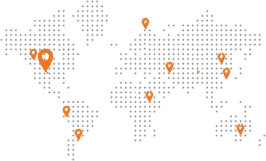Longwall U.S.A., Pittsburgh, Pennsylvania, June 1991
Authors: H. N. Maleki (AAI) and P. Hynes (Tg Soda Ash, Inc.)
Cooperative effort between Tg (Texasgulf) Soda Ash, Inc.’s and J.F.T. Agapito & Associates, Inc.’s (AAI) ground control engineers has resulted in an innovative mine design and a continuous monitoring system at Tg’s trona operation, Wyoming. Performing geotechnical analyses of mining layouts on a routine basis and monitoring design performance on real-time using microcomputers has been shown to be practical. Through such a program, significant improvements in resource recovery, productivity, and stability have been achieved. Specific layouts analyzed and implemented consist of a shortwall mining system with an advancing tailgate and a three-entry gate system using 17-ft-wide pillars at 1400-ft depth.
Two computer codes, originally developed for “main frame computers,” together with pre- and post-processors, have been successfully implemented on IBM-PC and compatible 386 microcomputers. These codes are routinely used for practical mine layout design and resource optimization. EXPAREA is a three-dimensional, displacement-discontinuity code, suitable for design of underground layouts. VISCOT is a two-dimensional, finite-element code with elastic, visco-elastic, and elasto-plastic material behavioral capabilities. These codes have been used together to analyze time-dependent material behavior and roof/floor stability.
To collect time-dependent deformation and stresses on a continuous basis, a monitoring system was implemented at the mine. Results are monitored at the mine office using a 386 microcomputer. Such monitoring is used to verify input to the numerical models and to warn against impending stability problems. Improved mine layouts are adopted based on routine modeling and geotechnical monitoring.


